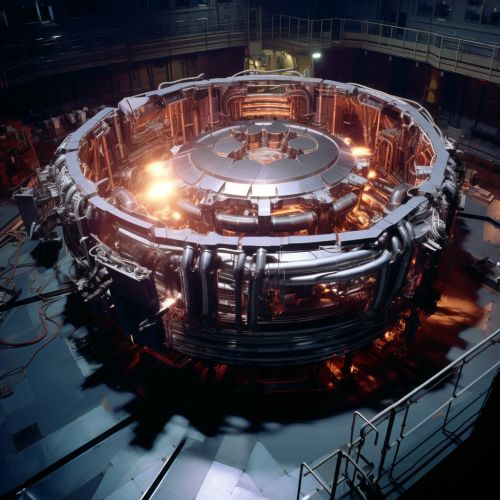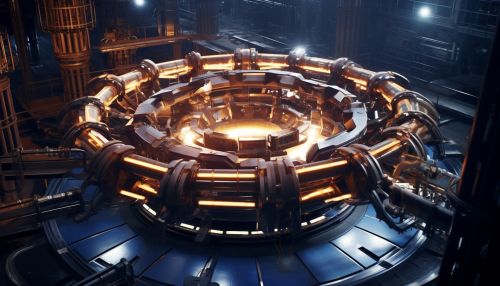Fusion reactor
Introduction
A fusion reactor is a type of nuclear reactor that produces energy by fusing together light atomic nuclei, such as hydrogen, to form heavier atomic nuclei, such as helium. This process, known as nuclear fusion, is the same process that powers the sun and other stars. Fusion reactors have the potential to provide a nearly limitless and clean source of energy, but the technical challenges of achieving controlled fusion on Earth are significant.
Principles of Fusion
Nuclear fusion occurs when two light atomic nuclei combine to form a heavier nucleus. This process releases a large amount of energy due to the conversion of a small amount of the mass of the nuclei into energy, according to Einstein's mass-energy equivalence principle. The most common fusion reactions involve isotopes of hydrogen, specifically deuterium and tritium, which fuse to form helium and a neutron.
Types of Fusion Reactors
There are several types of fusion reactors, each with its own set of challenges and potential benefits. The two most common types are Magnetic confinement fusion reactors and Inertial confinement fusion reactors.
Magnetic Confinement Fusion Reactors
Magnetic confinement fusion reactors use magnetic fields to confine the plasma. The most common type of magnetic confinement reactor is the tokamak, a toroidal (donut-shaped) device that uses a combination of external magnetic fields and electric currents flowing in the plasma to create the confining magnetic field.
Inertial Confinement Fusion Reactors
Inertial confinement fusion reactors use high-energy lasers or ion beams to heat and compress a small pellet of fusion fuel to the point where nuclear fusion occurs. The most well-known inertial confinement fusion project is the National Ignition Facility in the United States.
Challenges of Fusion Power
Despite the promise of fusion power, there are many technical challenges that must be overcome. These include achieving the necessary conditions for fusion, maintaining plasma stability, dealing with the high-energy neutrons produced by the fusion reactions, and managing the heat and radiation produced by the reactor.
Potential Benefits of Fusion Power
If these challenges can be overcome, fusion power has the potential to provide a nearly limitless source of energy with minimal environmental impact. Fusion reactors produce no greenhouse gases and the primary fuel, deuterium, can be extracted from seawater. Additionally, while fusion reactors do produce radioactive waste, it is less long-lived than the waste produced by fission reactors.
Conclusion
While the promise of fusion power is great, the technical challenges are significant. However, research is ongoing and progress is being made. If successful, fusion power could provide a clean, abundant source of energy for the future.
See Also


